waternymph

WaterNymph Floating Outlet Pre Water Filter Pump Saver
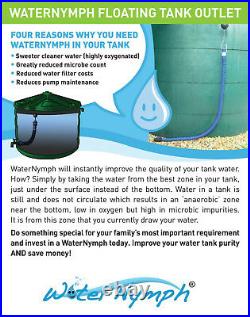
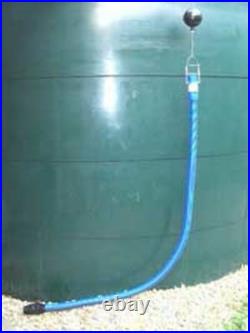
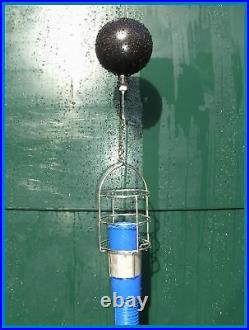
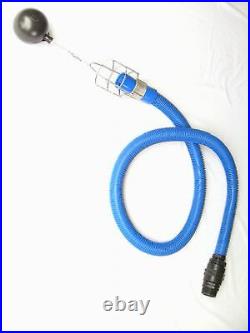
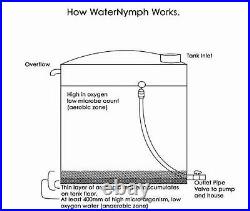

WaterNymph Floating Tank Outlet – Primary Water Filter. WaterNymph is a Floating Tank Outlet and Primary Water Filter which does not need replacing or maintanence once installed. Way from your water tank means more sediment to damage pumps, clog water filters, clog appliance filters in the home and lower quality water to drink. Sediment in the base of water tanks is the major cause of water pump failure, filter clogging and reduction in drinking water quality. WaterNymph comes with a standard 40 mm BSP Threaded Male fitting to thread into tank outlets with threaded outlets. If your tank has a different size outlet we supply a complementary fitting for outlet sizes from 20 mm to 50 mm. Please select your tank outlet size when ordering through the check out. From the depiction of the typical water tank, be it plastic, steel, concrete or fibreglass you will see that when new water enters the tank it remains near the surface. There is very little water circulation in a tank apart from the slow removal of water from the bottom (as water is drawn off) and the replenishment at the top by rainwater (or in some cases dam, stream or bore water fed in by gravity or a pump). Is made from the best quality materials available, food grade plastic and stainless steel in its construction enabling us to offer a 10 year guarantee for installation in covered tanks. The robustness of its construction gives us confidence it will last many years longer than its guarantee. Fills a vital gap in the water tank filter accessories market and is certain to become a standard fixture on water tanks, big or small, in the future. Please read the instructions that come with your. Is correctly installed you won’t need to touch it again. The water level in the tank must be low enough to allow you to stand in and reach the outlet. If your tank is full it can be difficult to waste the stored water. Other options could be. If you have more than one water tank you can transfer the water to another tank from the one in which you are installing the. Wait until the level is lowered from usage. Best to do the operation before rain is forecast. This is also presents an opportunity to clean the tank. You will need the following equipment. Lower the ladder through the tank inspection hole and descend with the. A torch will most likely be required to illuminate the tank outlet. If your tank has a standard size 40 mm outlet the. Can be screwed firmly straight into the Tank outlet. If you have indicated a different size tank outlet fitting your. Will be supplied with an adaptor that can be screwed into your tank outlet. Important Final Installation Step. The final step is to remove any air trapped in the. By submerging it, starting at the bottom or tank outlet end and moving to the float end. Air is fully expelled when the unit is fully submerged, except for the float. Is now ready for operation. The water we drink as an essential for life ranks second to air in its importance to lifeform. What is sharing your water tank? Rain Water can contain bird, bat, possum and rodent faeces, lizards insects, leaf particles and dust. Tank water is the perfect breeding ground for all kinds of bacteria and viruses. Sediments and dirt build up may even clog up your water outlet. In both tank and stream water there is a vast array of micro organisms, most of them are harmless to humans however there are some common ones that can cause minor stomach upsets and diarrhoea. These usually only last a day or two, the more nasty ones, can last months and require medical intervention but fortunately these are less common. The organisms present fall into three distinct biological categories and are. Bacteria are ubiquitous in every habitat on earth, more commonly known as germs. There are many varieties of bacteria in your water and the majority are completely harmless but there are several varieties that are common and often cause problems. E-coli and Campylobacter are common and when ingested in sufficient quantities cause dysentery. The actual concentration of these bacteria in the water is a very good indication of the water quality. The fewer the better. The conditions on the bottom of most tanks provide a good environment for these microbes and they multiply, feeding on the nutrients that build up and become available at the bottom of the tank. This group of single celled organisms include the very unpleasant parasites Guardia and Cryptosporidium that live and breed in the intestines of mammals and birds. The symptoms of infection are stomach cramps, severe diarrhoea, fatigue and general wasting. The method they use to disperse is in the form of tiny cysts, basically a capsule containing the parasite in a dormant form. It can then remain in water for a long time becoming active when conditions are right i. When it is ingested by a person or animal drinking it. It then breeds rapidly in the gut and continues to produce hundreds of thousands of cysts that are expelled in the hosts faeces to re-infect others. It is quite difficult to test for these creatures as only one or two may be present in large quantities of water, however one is enough to start an infection. Luckily most tanks have low or no cysts present it appears though the chances are much higher if rodents or possums can access the roof or if the tank is filled by way of a stream. Tiny enough to live in individual cells they are hard to detect and so little is known about their distribution. It is known that Hepatitis A can definitely survive in tanks and polio too though polio is no longer considered a threat due to immunisations. Bird Flu Who knows, but it would seem likely as birds are the most likely creatures to be hanging around on your roof. Whilst not strictly a health issue impurities in your tank are more obvious, mainly because, unlike microscopic disease organisms, they can be seen. They also create problems such as blocking filters on dishwashers, washing machines, taps and showers which is annoying. Impurities quickly reduce the efficiency of the filters some people use to ensure our tank water is safe to drink. A Health Department report found has found that filters can even contribute to bacteria growth if not properly cleaned, replaced and serviced. Filter blockage due to impurities also reduces water pressure. Is the single most effective thing you can do to improve your water, both long and short term. Other simple steps such as removing overhanging branches from your roof, removing access to your roof for animals and keeping your gutters clean will help ensure you can drink as much and as freely as you like of the delicious, sweet quality water, so essential to human health and without the doubts of its purity from your tank. While it must be conceded that illness is a definite possibility as a result of drinking tank water. That said it is also a’lucky dip’. If your resistance is low it will be more likely and if you drink a lot of water the chances are increased also. Gastrointestinal illness may come from your water or they may be from your food. Water testing can give you some indication of the state of your water but only at the time it was taken. The quality of the water can change rapidly with temperature, rainfall frequency and the seasonal behaviour of birds and animals. WaterNymph Tank off-take system. Has been derived from the beautiful floating water lily and the life giving outflow of springs associated with the. Simply will give your tank water a new sweeter outflow once installed. With the evidence that water tanks have the ability to store not only water but also collect everything else from off the roof (or from dams or streams) and then provide a perfect haven for a multitude of microbes in the build up of matter on the bottom of the tank requires a new approach in order to obtain a solution to this age old problem. The following are some common questions and answers that you may find of assistance. We have used tank water for years and never had any problems, so why would I install a. Realistically (and statistically) the chances of fatal diseases from tank water are very low, however, there is a very high probability of’minor’ illnesses. These are caused mainly by E-coli and campylobacter bacteria which are present in virtually every water tank. They are concentrated at the bottom of the tank and if you ingest too many you get an upset tummy and or diarrhoea. Most people attribute their symptoms to bad food and accept the inconvenience, but it shouldn’t be so. Good water is the very basis of health and our immune systems have enough work to do already without extra caused by an easily preventable burden of faecal bacteria. Also this type of illness spreads easily so it tends to affect the whole family. A substitute for good tank and roof catchment maintenance? No its not but, it will give you the best result for the dollars and time invested into your home rain water tank supply. Its maintenance free once installed and enhances the other rain water systems such as gutter guard, first flush diverters, tank strainers, tank sludge removal. I have installed first flush diverters, strainers and leaf guards so my tank is clean? Even with regularly cleaned rooves and well serviced first flush diverters small dust particles get entrained in the water flow and pass through the stainer. First flush diverters do a great job in reducing the dirt particles going into your tank but they cannot not take it all out. So unfortunately it can not ever be really clean. You just cannot practically filter water to your tank. Imagine what happens to bird and small animal droppings when it rains. They are dissolved and the water travels to the tank. The bacteria are already single-celled organisms in suspension. The one good thing about this inescapable situation is that the bacteria do react to gravity and sink to be the bottom zone of the tank. I already have filters for my water tank. Acts as a pre-filter and increases your filter life. Filters can be very good but the most efficient at removing the smallest organisms are expensive and can clog up quite quickly. The cleaner water that the. Off takes means that your filters will last longer before needing a clean or replacement. Filters in fact can actually breed bacteria if they become blocked so they do require regular monitoring and servicing. My tank is an unusual size/shape. It will work on tanks of all sizes and shapes. Further information is included with the units fitting instructions (when ordering be sure to state the material the tank is constructed and its size as the relevant fitting instructions differ). Is it difficult to install? Is simple to install. The water level inside the tank must be shallow enough to stand in and to be able to reach the outlet. This equates to around a quarter of a tank of water. The whole operation should only take 10 mins and normally involves just screwing the end of the. Unit into the tank outlet. My tank is full so I have to empty it to install the. It is easy to install with approximately a quarter full tank. It is difficult for many people to “waste” their tank water but its mostly a psychological barrier. If it is done before good rainfall is forecast it is full again in no time. You may also be able to transfer water to another tank. The immediate positive benefits of the. Easily outweigh the loss of some water. I’m not too handy or I’m too busy to install it myself. What shall I do? Any handyman with a ladder could install a. (It comes with full instructions) or a tank specialist or plumber can easily do it. What happens if I run out of water? What happens if your tank runs out of water. The same as if you did not have a. Installed, the pump will be in danger of sustaining damage. Unit cannot become blocked so the priority is to turn off the pump and get more water! A tank level indicator is a good idea because we all know how inconvenient running out of water is. On the order form I’ve got to provide a tank outlet size. Whats the best way to do it? It’s actually pretty easy. All you need to do is measure across the pipe that sticks out at the bottom of your tank. It will probably (but not always) go into a valve and then to the pump. The diameter of the outlet pipes varies but as long as you get it accurate we can send the correct fitting. If no measurement is included we send the standard 40 mm fitting which is the most common tank outlet size. However, as your order is for export from Australia , you only pay the GST exempt. We recommend using Oanda currency calculator to obtain an estimate of the cost in your own currency. I have more than one tank do. I need more than one. You only need one in the tank from which you draw your water. Will it mean I have less water pressure if I have a gravity feed system? It will be exactly the same water pressure. The item “WaterNymph Floating Outlet Pre Water Filter Pump Saver” is in sale since Tuesday, November 7, 2017. This item is in the category “Home Appliances\Small Kitchen Appliances\Water Purification\Water Filters”. The seller is “water_sweet” and is located in Silkstone, Queensland. This item can be shipped worldwide.
- Type: Whole House Filter System
- Brand: Waternymph
- Power: Not required
- Filtration Method: Floating Suction Zone Separation
- MPN: WN
- Model: WaterNymph Floating Tank Suction
- Bundle Listing: No
